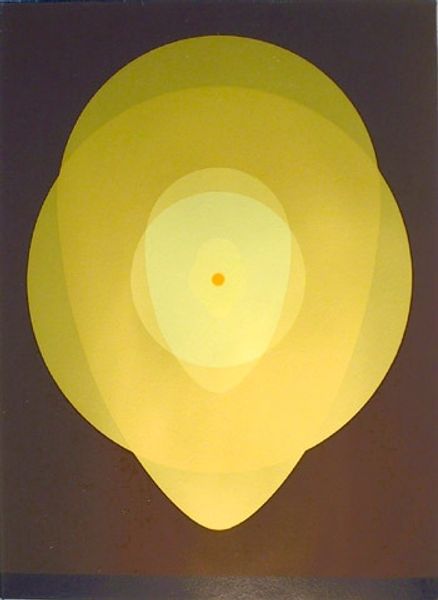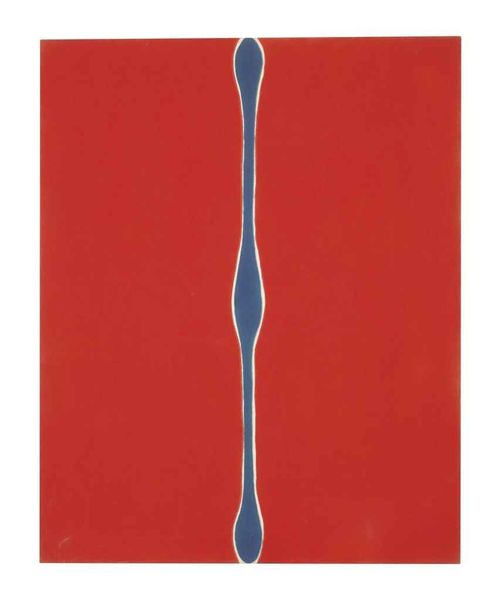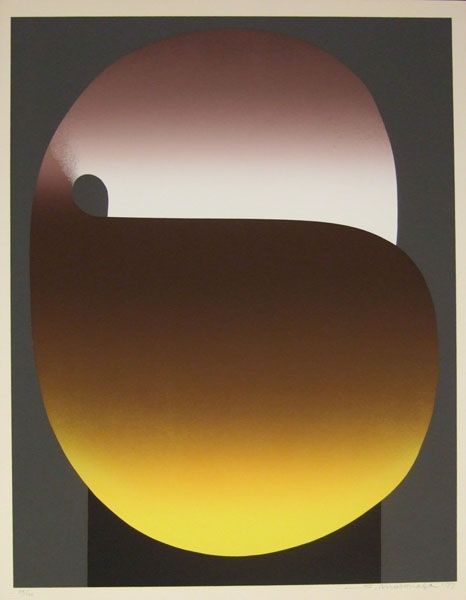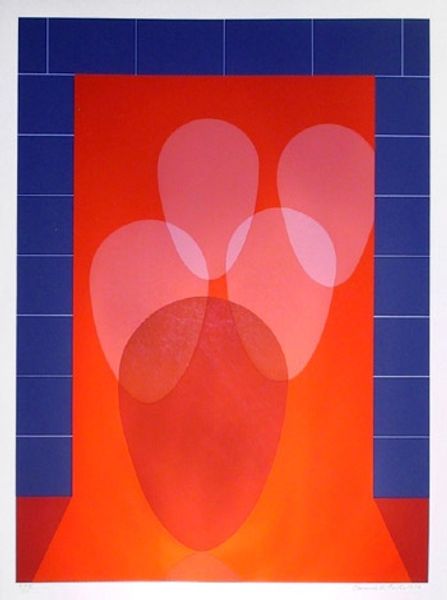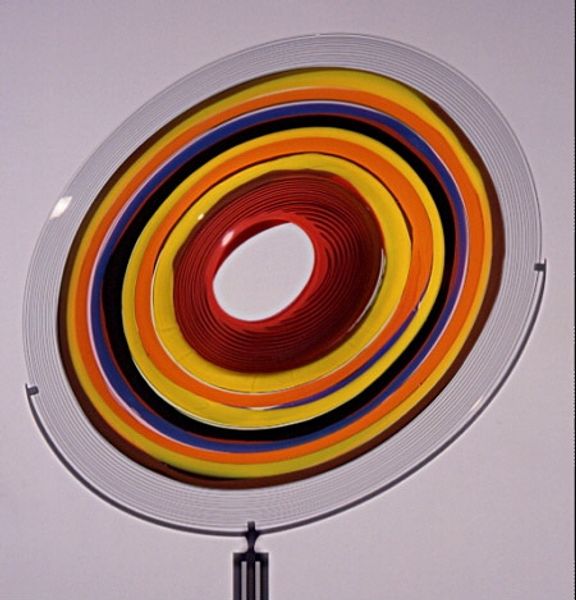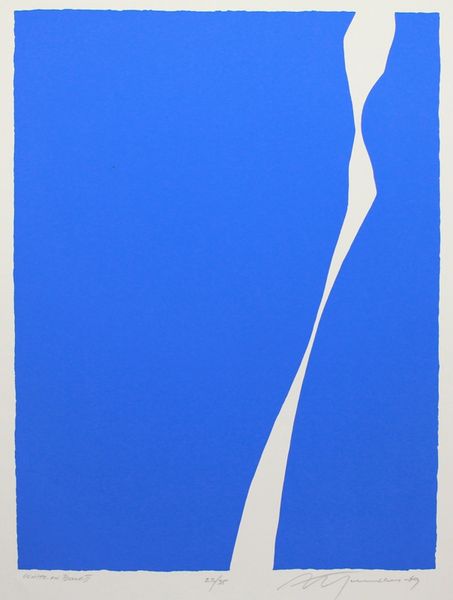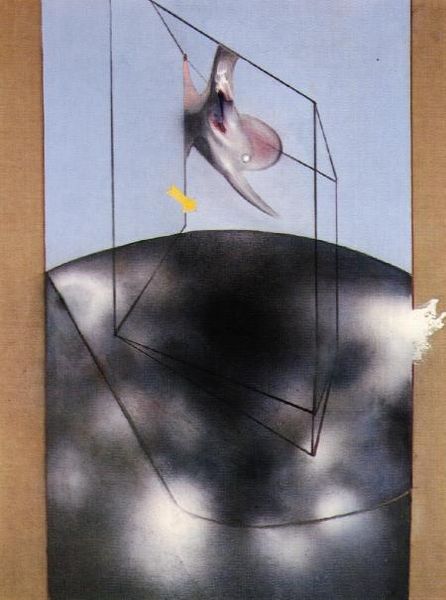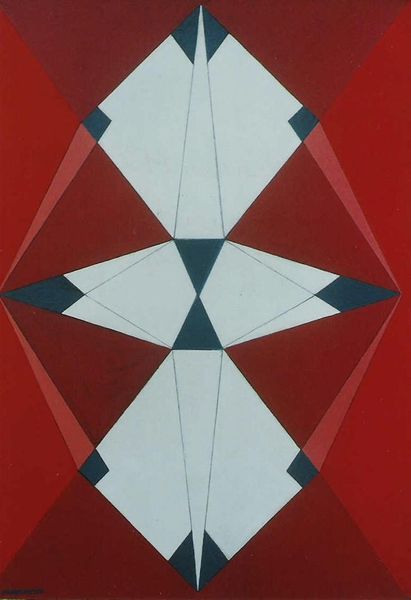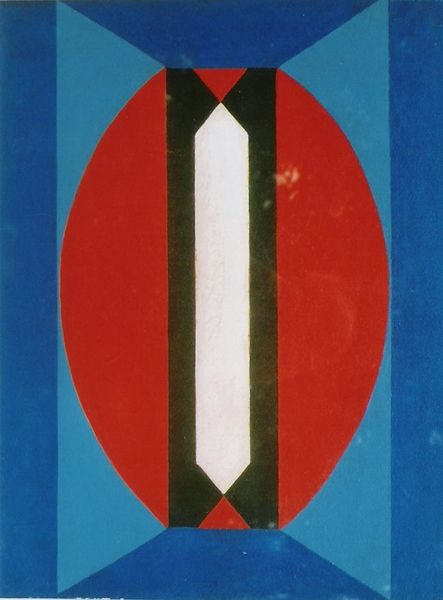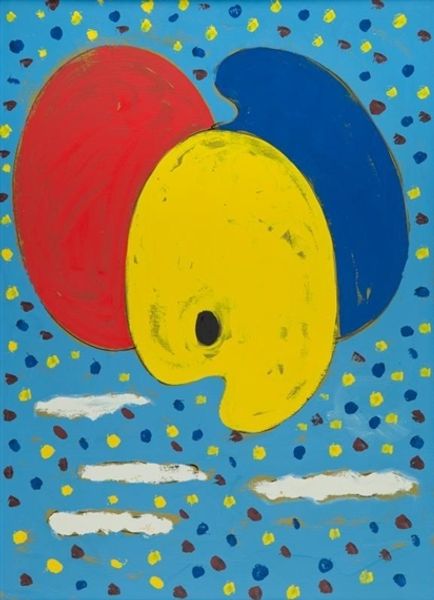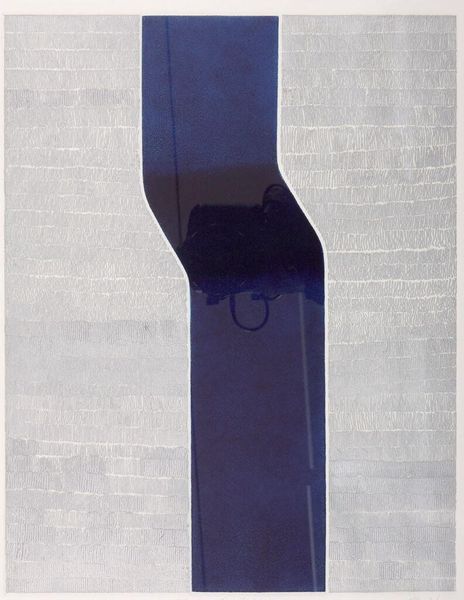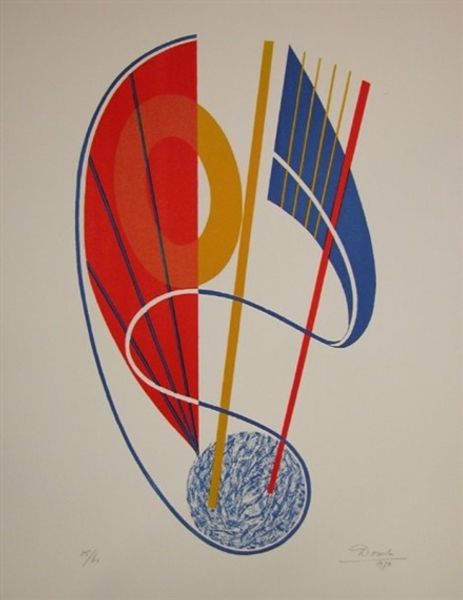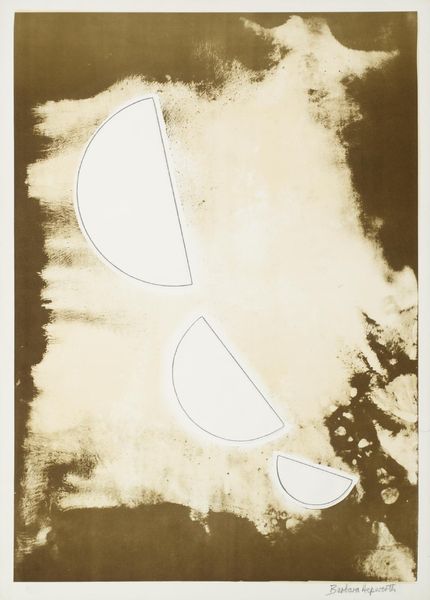
Copyright: Clarence Holbrook Carter,Fair Use
Curator: Clarence Holbrook Carter's "Tulip," created in 1978 using acrylic paint, is a captivating piece for examination. Editor: It's surprisingly bold, isn’t it? The stark contrasts of the white form against that brilliant blue, bisected by a fiery red horizon. It almost pulsates. Curator: Indeed. The composition, with its emphasis on geometric forms and clean lines, firmly places this piece within the Pop Art movement and echoes the broader interest in abstraction that marked that period. Consider Warhol's commentary on consumerism – how does Carter engage or diverge from that discourse here? Editor: For me, the power resides within the concentric ovals. They remind me of the nested structure of Russian dolls, but even more compelling is the almost cosmic symbol of an eclipse. Do you see how that lower, darkest circle swallows light itself? Curator: That is fascinating. When examining this work through a feminist lens, it begs to be deconstructed. How does the interplay of solid colors and clearly defined forms challenge or reinforce notions of feminine and masculine aesthetics in a patriarchal art system? Editor: Absolutely! And isn't that chromatic and formal reduction – the paring down of form and subject to fundamental visual information – key to unlocking some subliminal memory? It recalls a natural phenomenon reduced to elemental code. Perhaps that is what he's suggesting we consider. Curator: This perspective offers avenues for understanding its social and cultural resonance at the time, particularly with shifting societal norms related to design and perception. "Tulip," therefore, embodies the artist's social, and personal intersectional identity through geometric vocabulary. Editor: I leave it thinking about how our brains are wired to recognize primal shapes, those which form both our understanding of landscape and even the cosmos, reduced to its basic visual vocabulary. Thank you for untangling the historical nuances. Curator: The pleasure was mine; situating this in the discourse has broadened its depth.
Comments
No comments
Be the first to comment and join the conversation on the ultimate creative platform.
